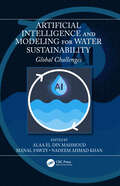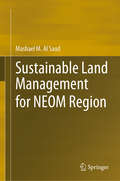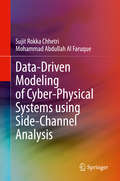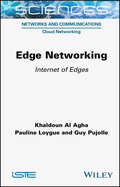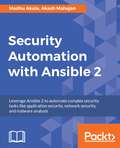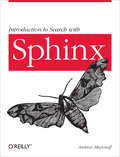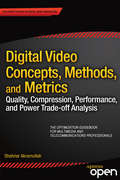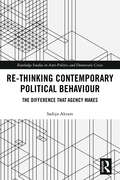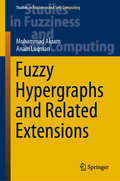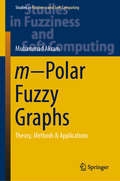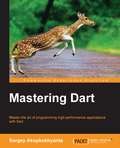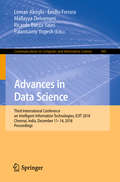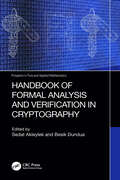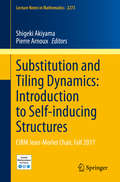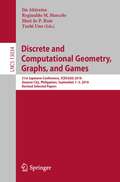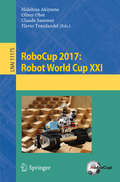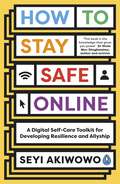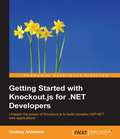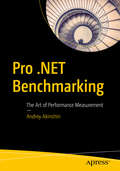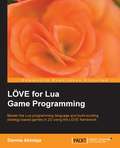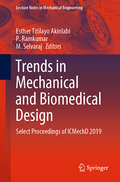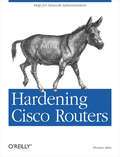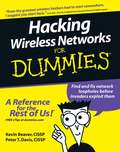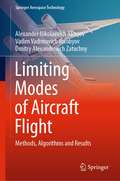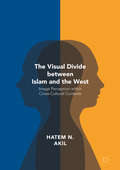- Table View
- List View
Artificial Intelligence and Modeling for Water Sustainability: Global Challenges
by Alaa El Din Mahmoud Manal Fawzy Nadeem Ahmad KhanArtificial intelligence and the use of computational methods to extract information from data are providing adequate tools to monitor and predict water pollutants and water quality issues faster and more accurately. Smart sensors and machine learning models help detect and monitor dispersion and leakage of pollutants before they reach groundwater. With contributions from experts in academia and industries, who give a unified treatment of AI methods and their applications in water science, this book help governments, industries, and homeowners not only address water pollution problems more quickly and efficiently, but also gain better insight into the implementation of more effective remedial measures. FEATURES Provides cutting-edge AI applications in water sector. Highlights the environmental models used by experts in different countries. Discusses various types of models using AI and its tools for achieving sustainable development in water and groundwater. Includes case studies and recent research directions for environmental issues in water sector. Addresses future aspects and innovation in AI field related to watersustainability. This book will appeal to scientists, researchers, and undergraduate and graduate students majoring in environmental or computer science and industry professionals in water science and engineering, environmental management, and governmental sectors. It showcases artificial intelligence applications in detecting environmental issues, with an emphasis on the mitigation and conservation of water and underground resources.
Sustainable Land Management for NEOM Region
by Mashael M. Al SaudThis book is the first of its type on NEOM Region, NW of Saudi Arabia. This region has been designated in 2017 to be an international economic hub. However, no studies have been done on this region which occupies several natural resources including remarkable landscape with unique ecological species, ores and water resources. The region is also vulnerable to many aspects of threatening natural hazards.Based on her expertise, namely geomorphological processes, earth sciences, space techniques and natural risk assessment, the author made an initiative to produce this book using advanced tools, specifically satellite images and geo-information system. The book introduces several thematic maps obtained for the first time for NEOM Region. Hence, it represents a scientific guide for land management and urban planning approaches. This book is a very significant document for a variety of readers and researchers including decision makers, land managers and planners, as well as geographers and geologists. In addition, the basic concepts and new approaches attract researchers and academic teams including students, universities and research centers not only in Saudi Arabia, but in different parts of the World.
Data-Driven Modeling of Cyber-Physical Systems using Side-Channel Analysis
by Mohammad Abdullah Al Faruque Sujit Rokka ChhetriThis book provides a new perspective on modeling cyber-physical systems (CPS), using a data-driven approach. The authors cover the use of state-of-the-art machine learning and artificial intelligence algorithms for modeling various aspect of the CPS. This book provides insight on how a data-driven modeling approach can be utilized to take advantage of the relation between the cyber and the physical domain of the CPS to aid the first-principle approach in capturing the stochastic phenomena affecting the CPS. The authors provide practical use cases of the data-driven modeling approach for securing the CPS, presenting novel attack models, building and maintaining the digital twin of the physical system. The book also presents novel, data-driven algorithms to handle non- Euclidean data. In summary, this book presents a novel perspective for modeling the CPS.
Edge Networking: Internet of Edges
by Khaldoun Al Agha Pauline Loygue Guy PujolleThe Internet of Edges is a new paradigm whose objective is to keep data and processing close to the user. This book presents three different levels of Edge networking: MEC (Multi-access Edge Computing), Fog and Far Edge (sometimes called Mist or Skin). It also reviews participatory networks, in which user equipment provides the resources for the Edge network. Edge networks can be disconnected from the core Internet, and the interconnection of autonomous edge networks can then form the Internet of Edges. This book analyzes the characteristics of Edge networks in detail, showing their capacity to replace the imposing Clouds of core networks due to their superior server response time, data security and energy saving.
Security Automation with Ansible 2: Leverage Ansible 2 to automate complex security tasks like application security, network security, and malware analysis
by Madhu Akula Akash MahajanAutomate security-related tasks in a structured, modular fashion using the best open source automation tool available About This Book • Leverage the agentless, push-based power of Ansible 2 to automate security tasks • Learn to write playbooks that apply security to any part of your system • This recipe-based guide will teach you to use Ansible 2 for various use cases such as fraud detection, network security, governance, and more Who This Book Is For If you are a system administrator or a DevOps engineer with responsibility for finding loop holes in your system or application, then this book is for you. It's also useful for security consultants looking to automate their infrastructure's security model. What You Will Learn • Use Ansible playbooks, roles, modules, and templating to build generic, testable playbooks • Manage Linux and Windows hosts remotely in a repeatable and predictable manner • See how to perform security patch management, and security hardening with scheduling and automation • Set up AWS Lambda for a serverless automated defense • Run continuous security scans against your hosts and automatically fix and harden the gaps • Extend Ansible to write your custom modules and use them as part of your already existing security automation programs • Perform automation security audit checks for applications using Ansible • Manage secrets in Ansible using Ansible Vault In Detail Security automation is one of the most interesting skills to have nowadays. Ansible allows you to write automation procedures once and use them across your entire infrastructure. This book will teach you the best way to use Ansible for seemingly complex tasks by using the various building blocks available and creating solutions that are easy to teach others, store for later, perform version control on, and repeat. We'll start by covering various popular modules and writing simple playbooks to showcase those modules. You'll see how this can be applied over a variety of platforms and operating systems, whether they are Windows/Linux bare metal servers or containers on a cloud platform. Once the bare bones automation is in place, you'll learn how to leverage tools such as Ansible Tower or even Jenkins to create scheduled repeatable processes around security patching, security hardening, compliance reports, monitoring of systems, and so on. Moving on, you'll delve into useful security automation techniques and approaches, and learn how to extend Ansible for enhanced security. While on the way, we will tackle topics like how to manage secrets, how to manage all the playbooks that we will create and how to enable collaboration using Ansible Galaxy. In the final stretch, we'll tackle how to extend the modules of Ansible for our use, and do all the previous tasks in a programmatic manner to get even more powerful automation frameworks and rigs. Style and approach This comprehensive guide will teach you to manage Linux and Windows hosts remotely in a repeatable and predictable manner. The book takes an in-depth approach and helps you understand how to set up complicated stacks of software with codified and easy-to-share best practices.
Introduction to Search with Sphinx
by Andrew AksyonoffThis concise introduction to Sphinx shows you how to use this free software to index an enormous number of documents and provide fast results to both simple and complex searches. Written by the creator of Sphinx, this authoritative book is short and to the point. Understand the particular way Sphinx conducts searches Install and configure Sphinx, and run a few basic tests Issue basic queries to Sphinx at the application level Learn the syntax of search text and the effects of various search options Get strategies for dealing with large data sets, such as multi-index searching Apply relevance and ranking guidelines for presenting best results to the user
Digital Video Concepts, Methods, and Metrics: Quality, Compression, Performance, and Power Trade-off Analysis
by Shahriar AkramullahDigital Video Concepts, Methods, and Metrics: Quality, Compression, Performance, and Power Trade-off Analysis is a concise reference for professionals in a wide range of applications and vocations. It focuses on giving the reader mastery over the concepts, methods and metrics of digital video coding, so that readers have sufficient understanding to choose and tune coding parameters for optimum results that would suit their particular needs for quality, compression, speed and power. The practical aspects are many: Uploading video to the Internet is only the beginning of a trend where a consumer controls video quality and speed by trading off various other factors. Open source and proprietary applications such as video e-mail, private party content generation, editing and archiving, and cloud asset management would give further control to the end-user. Digital video is frequently compressed and coded for easier storage and transmission. This process involves visual quality loss due to typical data compression techniques and requires use of high performance computing systems. A careful balance between the amount of compression, the visual quality loss and the coding speed is necessary to keep the total system cost down, while delivering a good user experience for various video applications. At the same time, power consumption optimizations are also essential to get the job done on inexpensive consumer platforms. Trade-offs can be made among these factors, and relevant considerations are particularly important in resource-constrained low power devices. To better understand the trade-offs this book discusses a comprehensive set of engineering principles, strategies, methods and metrics. It also exposes readers to approaches on how to differentiate and rank video coding solutions. What you'll learn Cost-benefit analysis of compression techniques Video quality metrics evaluation Performance and power optimization and measurement Trade-off analysis among power, performance, and visual quality Emerging uses and applications of video technologies Who this book is for This book is for anyone involved in designing, developing, validating, deploying, and reviewing systems and applications that deal with digital video. For example, software and hardware engineers, system architects, technical program and product managers, support and sales engineers, system integrators, technology journalists and video professionals working in the multimedia and telecommunication industries, researchers and graduate students, or even a tech-savvy user who posts a YouTube video would find this book a useful reference. Table of Contents Foreword/Preface Chapter 1:Introduction Chapter 2: Digital Video Compression Techniques Chapter 3: Video Coding Standards Chapter 4: Video Quality Metrics Chapter 5: Video Coding Speed and Performance Chapter 6: Power Consumptions by Video Applications Chapter 7: Video Application Power Consumption on Low-Power Platforms Chapter 8: Performance, Power, and Quality Tradeoff Analysis Chapter 9: Conclusion Appendix: Related Resources
Re-thinking Contemporary Political Behaviour: The Difference that Agency Makes (Routledge Studies in Anti-Politics and Democratic Crisis)
by Sadiya AkramProposing a novel approach to understanding the contemporary political landscape, Akram draws on the work of Pierre Bourdieu and Margaret Archer on agency and argues the need for an in-depth engagement with concepts of agency to improve the reach and scope of political analysis. Is the way that people engage with politics changing? If so, how well-equipped are we to document and explain the extent and range of the ways in which people are engaging in politics today? This book tackles these questions through a blend of theoretical reflection and empirical research, shedding new light on the relationship between arena and process definitions of politics, and how the social relates to the political. Hitherto unexplored features of agency such as the unconscious and the internal political conversation are shown to be critical in exploring how people mobilise today and how they make sense of their political engagement. Two in-depth case studies of the internal political conversations that individuals hold as well as an analysis of the 2011 UK riots are presented. Making a case for the role of self-expression in politics, this book will be of use for graduates and scholars interested in British politics, political theory, social theory, political sociology, the theory and practice of political engagement and political behaviour.
Fuzzy Hypergraphs and Related Extensions (Studies in Fuzziness and Soft Computing #390)
by Muhammad Akram Anam LuqmanThis book presents the fundamental and technical concepts of fuzzy hypergraphs and explains their extensions and applications. It discusses applied generalized mathematical models of hypergraphs, including complex, intuitionistic, bipolar, m-polar fuzzy, Pythagorean, complex Pythagorean, and q-rung orthopair hypergraphs, as well as single-valued neutrosophic, complex neutrosophic and bipolar neutrosophic hypergraphs. In addition, the book also sheds light on real-world applications of these hypergraphs, making it a valuable resource for students and researchers in the field of mathematics, as well as computer and social scientists.
m−Polar Fuzzy Graphs: Theory, Methods & Applications (Studies in Fuzziness and Soft Computing #371)
by Muhammad AkramThis book provides readers with an introduction to m-polar fuzzy graphs and m-polar fuzzy hypergraphs, covering both theories and applications. A special emphasis is given to m-polar fuzzy graphs at the aim of filling a gap in the literature, namely the absence of a mathematical approach to analyze multi-index, multipolar, and multi-attribute data. The book describes metrics and labeling in m-polar graphs, m-polar fuzzy matroids. It also discusses in detail important applications in decision-making problems and imaging processing. The book is expected to stimulate the curiosity of mathematics, computer scientists, and social scientists alike, and to provide both students and researchers with the necessary knowledge to understand and apply m−polar fuzzy graph theory.
Mastering Dart
by Sergey AkopkokhyantsIf you are an application developer who has experience with Dart and want to develop reusable and robust code in Dart, then this book is for you. You are expected to have a basic knowledge of core elements and applications.
Advances in Data Science: Third International Conference on Intelligent Information Technologies, ICIIT 2018, Chennai, India, December 11–14, 2018, Proceedings (Communications in Computer and Information Science #941)
by Leman Akoglu Emilio Ferrara Mallayya Deivamani Ricardo Baeza-Yates Palanisamy YogeshThis book constitutes the thoroughly refereed post-conference proceedings of the Third International Conference on Advances in Data Science, ICIIT 2018, held in Chennai, India, in December 2018.The 11 full papers along with 4 short papers presented were carefully reviewed and selected from 74 submissions.The papers are organized in topical sections on data science foundations, data management and processing technologies, data analytics and its applications.
Handbook of Formal Analysis and Verification in Cryptography (Prospects in Pure and Applied Mathematics)
by Sedat Akleylek Besik DunduaThis handbook of formal analysis in cryptography is very important for secure communication and processing of information. It introduces readers to several formal verification methods and software used to analyse cryptographic protocols. The chapters give readers general knowledge and formal methods focusing on cryptographic protocols. Handbook of Formal Analysis and Verification in Cryptography includes major formalisms and tools used for formal verification of cryptography, with a spotlight on new-generation cryptosystems such as post-quantum, and presents a connection between formal analysis and cryptographic schemes. The text offers formal methods to show whether security assumptions are valid and compares the most prominent formalism and tools as they outline common challenges and future research directions. Graduate students, researchers, and engineers worldwide will find this an exciting read.
Substitution and Tiling Dynamics: CIRM Jean-Morlet Chair, Fall 2017 (Lecture Notes in Mathematics #2273)
by Shigeki Akiyama Pierre ArnouxThis book presents a panorama of recent developments in the theory of tilings and related dynamical systems. It contains an expanded version of courses given in 2017 at the research school associated with the Jean-Morlet chair program.Tilings have been designed, used and studied for centuries in various contexts. This field grew significantly after the discovery of aperiodic self-similar tilings in the 60s, linked to the proof of the undecidability of the Domino problem, and was driven futher by Dan Shechtman's discovery of quasicrystals in 1984. Tiling problems establish a bridge between the mutually influential fields of geometry, dynamical systems, aperiodic order, computer science, number theory, algebra and logic. The main properties of tiling dynamical systems are covered, with expositions on recent results in self-similarity (and its generalizations, fusions rules and S-adic systems), algebraic developments connected to physics, games and undecidability questions, and the spectrum of substitution tilings.
Discrete and Computational Geometry, Graphs, and Games: 21st Japanese Conference, JCDCGGG 2018, Quezon City, Philippines, September 1-3, 2018, Revised Selected Papers (Lecture Notes in Computer Science #13034)
by Jin Akiyama Reginaldo M. Marcelo Mari-Jo P. Ruiz Yushi UnoThis book constitutes the thoroughly refereed post-conference proceedings of the 21st Japanese Conference on Discrete and Computational Geometry and Graphs, JCDCGGG 2018, held in Quezon City, Philippines, in September 2018. The total of 14 papers included in this volume was carefully reviewed and selected from 25 submissions. The papers feature advances made in the field of computational geometry and focus on emerging technologies, new methodology and applications, graph theory and dynamics.
RoboCup 2017: Robot World Cup XXI (Lecture Notes in Computer Science #11175)
by Hidehisa Akiyama Oliver Obst Claude Sammut Flavio TonidandelThis book includes the post-conference proceedings of the 21st RoboCup International Symposium, held in Nagoya, Japan, in September 2017. The 33 full revised papers and 9 papers from the winning teams presented were carefully reviewed and selected from 58 submissions. The papers are orginazed on topical sections on Robotics, Artificial intelligence, Environment perception, State estimation and much more.
How to Stay Safe Online: A digital self-care toolkit for developing resilience and allyship
by Seyi AkiwowoA powerful, comprehensive guide to spotting, responding to and proactively defending yourself from online abuse - and learning how to be a good ally to those experiencing it.'The need-to-know, must-have and barrier breaking book on fighting online abuse that everyone must have a copy of' Dr Shola Mos-Shogbamimu'A book written from the front line of life online - heartfelt, heart-breaking, practical, brilliant' Richard Curtis ______________________________________ Digital spaces are a positive force for change, connection and community, but left unregulated, they are not always safe. Globally, women are 27 times more likely than men to be harassed online. Black women are 84% more likely to face online harassment than white. There has been a 71% rise in online disability abuse and 78% of LGBTQ+ people have experienced hate speech online. How to Stay Safe Online is an urgent, necessary digital self-care tool from leading activist for online equality Seyi Akiwowo. With a blend of practical advice, Seyi's personal experiences and interviews with Jameela Jamil, Hera Hussain, Laura Bates and Yassmin Abdel-Magied, this book will: * Provide practical tips on how to confidently navigate online spaces * Equip you with a range of responses to online abuse and how to effectively report * Teach you how to set boundaries and use the internet as a force for good* Empower friends, teachers and parents to help victims * Help you create your own digital self-care plan This will be the go-to guide to developing resilience, greater compassion for others and authentic allyship online. ______________________________________'Seyi Akiwowo's work to make the online world safer, especially for Black women, is not only powerful, it's necessary' Nova Reid 'This helpful book is a crucial companion' Emma Gannon 'No one should be using the internet without having read this book' Alex Holder 'Accessible, empowering and potentially life-changing [...] everyone should read' Laura Bates'Seyi is one of the most important voices of our generation [...] I hope this book gets added to the national curriculum' Poppy Jamie
Getting Started with Knockout.js for .NET Developers
by Andrey AkinshinThis book is intended for .NET developers who want to use the MVVM design pattern to create powerful client-side JavaScript linked to server-side C# logic. Basic experience with ASP.NET, Razor, and creating web applications is needed.
Pro .NET Benchmarking: The Art of Performance Measurement
by Andrey AkinshinUse this in-depth guide to correctly design benchmarks, measure key performance metrics of .NET applications, and analyze results. This book presents dozens of case studies to help you understand complicated benchmarking topics. You will avoid common pitfalls, control the accuracy of your measurements, and improve performance of your software.Author Andrey Akinshin has maintained BenchmarkDotNet (the most popular .NET library for benchmarking) for five years and covers common mistakes that developers usually make in their benchmarks. This book includes not only .NET-specific content but also essential knowledge about performance measurements which can be applied to any language or platform (common benchmarking methodology, statistics, and low-level features of modern hardware).What You'll LearnBe aware of the best practices for writing benchmarks and performance testsAvoid the common benchmarking pitfallsKnow the hardware and software factors that affect application performanceAnalyze performance measurementsWho This Book Is For.NET developers concerned with the performance of their applications
LÖVE for Lua Game Programming
by Darmie AkinlajaThis book follows a tutorial approach with examples and step-by-step instructions to help explain the key concepts of the LÖVE framework as well as everything you need to know about game development using the Lua programming language.LÖVE2d for Lua Game Programming is for anyone who is interested in learning about desktop game development.
Trends in Mechanical and Biomedical Design: Select Proceedings of ICMechD 2019 (Lecture Notes in Mechanical Engineering)
by Esther Titilayo Akinlabi P. Ramkumar M. SelvarajThis book comprises select papers presented at the International Conference on Mechanical Engineering Design (ICMechD) 2019. The volume focuses on the recent trends in design research and their applications across the mechanical and biomedical domain. The book covers topics like tribology design, mechanism and machine design, wear and surface engineering, vibration and noise engineering, biomechanics and biomedical engineering, industrial thermodynamics, and thermal engineering. Case studies citing practical challenges and their solutions using appropriate techniques and modern engineering tools are also discussed. Given its contents, this book will prove useful to students, researchers as well as practitioners.
Hardening Cisco Routers
by Thomas AkinAs a network administrator, auditor or architect, you know the importance of securing your network and finding security solutions you can implement quickly. This succinct book departs from other security literature by focusing exclusively on ways to secure Cisco routers, rather than the entire network. The rational is simple: If the router protecting a network is exposed to hackers, then so is the network behind it. Hardening Cisco Routers is a reference for protecting the protectors. Included are the following topics: The importance of router security and where routers fit into an overall security plan Different router configurations for various versions of Cisco?s IOS Standard ways to access a Cisco router and the security implications of each Password and privilege levels in Cisco routers Authentication, Authorization, and Accounting (AAA) control Router warning banner use (as recommended by the FBI) Unnecessary protocols and services commonly run on Cisco routers SNMP security Anti-spoofing Protocol security for RIP, OSPF, EIGRP, NTP, and BGP Logging violations Incident response Physical security Written by Thomas Akin, an experienced Certified Information Systems Security Professional (CISSP) and Certified Cisco Academic Instructor (CCAI), the book is well organized, emphasizing practicality and a hands-on approach. At the end of each chapter, Akin includes a Checklist that summarizes the hardening techniques discussed in the chapter. The Checklists help you double-check the configurations you have been instructed to make, and serve as quick references for future security procedures. Concise and to the point, Hardening Cisco Routers supplies you with all the tools necessary to turn a potential vulnerability into a strength. In an area that is otherwise poorly documented, this is the one book that will help you make your Cisco routers rock solid.
Hacking Wireless Networks For Dummies
by Devin K. Akin Peter T. Davis Kevin BeaverBecome a cyber-hero - know the common wireless weaknesses"Reading a book like this one is a worthy endeavor toward becoming an experienced wireless security professional."--Devin Akin - CTO, The Certified Wireless Network Professional (CWNP) ProgramWireless networks are so convenient - not only for you, but also for those nefarious types who'd like to invade them. The only way to know if your system can be penetrated is to simulate an attack. This book shows you how, along with how to strengthen any weak spots you find in your network's armor.Discover how to:Perform ethical hacks without compromising a systemCombat denial of service and WEP attacksUnderstand how invaders thinkRecognize the effects of different hacksProtect against war drivers and rogue devices
Limiting Modes of Aircraft Flight: Methods, Algorithms and Results (Springer Aerospace Technology)
by Alexander Nikolaevich Akimov Vadim Vadimovich Vorobyov Dmitry Alexandrovich ZatuchnyThis book describes in detail a method of direct optimization, which makes it possible to choose the best trajectory of an aircraft in conditions of its limited resource. This can happen in the event of an emergency on board, associated with both a possible equipment failure and external influences, for example, when lightning strikes an aircraft or collides with a moving object. The highlight of this book is the fact that the results presented in it can be applied universally to the choice of the flight path of large and small aircraft, as well as helicopter technology. In addition, they take into account various conditions of aircraft flight, including a possible accident. The methods and algorithms presented here can be used as the basis for the creation of automatic collision avoidance systems, as well as the choice of the best aircraft trajectory for flights in different regions and in different conditions.
The Visual Divide between Islam and the West
by Hatem N. AkilThis book considers the ways in which Muslims view the way they are being viewed, not viewed, or incorrectly viewed, by the West. The book underscores a certain "will-to-visibility" whereby Muslims/ Arabs wish just to be "seen" and to be marked as fellow human beings. The author relates the failure to achieve this visibility to a state of desperation that inextricably and symmetrically ties visibility to violence. When Syrian and Palestinian refugees recently started refusing to be photographed, they clearly ushered the eventual but inevitable collapse of the image and its final futility. The photograph has been completely emptied of its last remaining possibility of signification. The book attempts to engage with questions about the ways in which images are perceived within cross cultural contexts. Why and how do people from different cultural backgrounds view the same image in opposing ways; why do cartoon, photographs, and videos become both the cause and target of bloody political violence - as witnessed recently by the deadly attacks against Charlie Hebdo in France and in the swift military response by the US, Jordan, France, and others to videotaped violence by ISIS.
